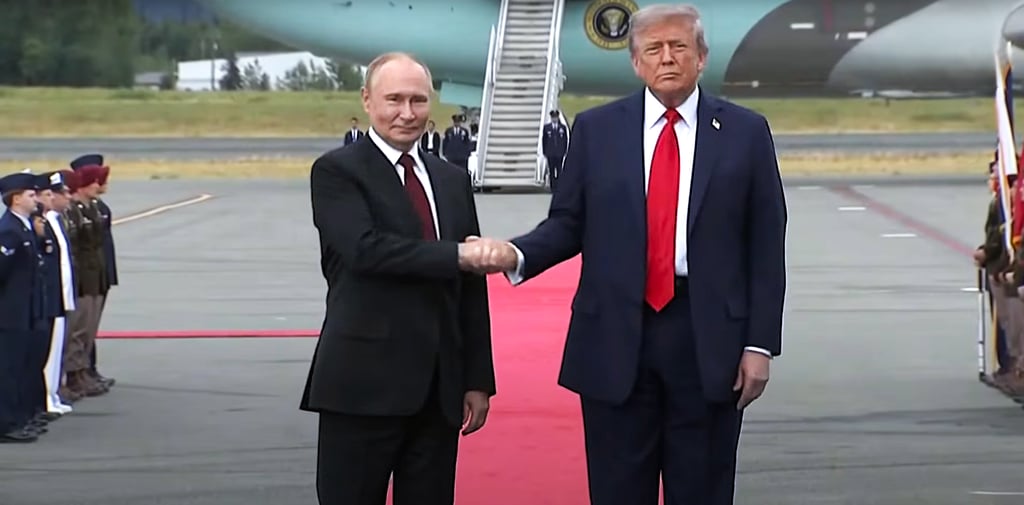Trump–Putin Summit in Alaska 2025: Talks on Ukraine and Global Security
On August 15, 2025, Donald Trump and Vladimir Putin met in Alaska to discuss Ukraine and global security. Here’s what happened at the high-stakes summit.
Raja Awais Ali
8/16/20252 min read


Trump and Putin’s Alaska Meeting 2025: Talks on Ukraine and Global Security
On August 15, 2025, U.S. President Donald Trump and Russian President Vladimir Putin met at Joint Base Elmendorf-Richardson in Anchorage, Alaska. This high-profile summit was their first face-to-face meeting since Trump’s re-election in 2024 and Putin’s first visit to the United States in a decade. The primary agenda was the ongoing conflict in Ukraine and broader global security issues. With the world watching closely, the meeting carried historic significance, even though it concluded without a breakthrough agreement.
The summit began with a ceremonial red-carpet welcome and a military flyover, symbolizing its diplomatic importance. Behind closed doors, Trump and Putin engaged in private discussions for over two and a half hours, joined by senior officials from both nations. Trump’s delegation included Secretary of State Marco Rubio, Defense Secretary Pete Hegseth, and CIA Director John Ratcliffe. Putin was accompanied by Foreign Minister Sergey Lavrov and senior policy advisors. Both leaders later described the talks as “positive” and “productive,” but details remained limited, and no press questions were taken.
Key issues discussed included the Ukraine war, NATO expansion, and Europe’s security landscape. President Trump stressed the need for a comprehensive settlement rather than a temporary ceasefire, emphasizing that Ukraine must play a central role in any peace plan. President Putin, meanwhile, reiterated Russia’s long-standing demands, including security guarantees and opposition to Ukraine joining NATO. Despite cordial exchanges, the summit ended without a formal ceasefire or agreement, reflecting the challenges of aligning opposing strategic priorities.
International reactions were swift. Ukrainian President Volodymyr Zelenskyy, who was not invited to the summit, expressed disappointment and underlined Ukraine’s sovereignty as a non-negotiable factor. European leaders cautiously welcomed the dialogue but insisted that any agreement must include “ironclad security guarantees” for Ukraine. Global analysts noted that while the Alaska meeting did not deliver concrete results, it opened channels of communication and demonstrated both leaders’ willingness to engage.
For readers, the Alaska summit illustrates the delicate balance of diplomacy, where national interests, regional security, and global expectations intersect. Although the absence of a ceasefire was a setback, ongoing discussions provide a glimmer of hope that sustained negotiations may eventually lead to peace and stability.
In conclusion, the Trump–Putin meeting in Alaska was a historic moment in 2025 diplomacy. While it fell short of producing a breakthrough, it highlighted the importance of dialogue at the highest level. The summit has set the stage for future talks, keeping alive the possibility of meaningful progress toward ending the Ukraine conflict and strengthening global security.